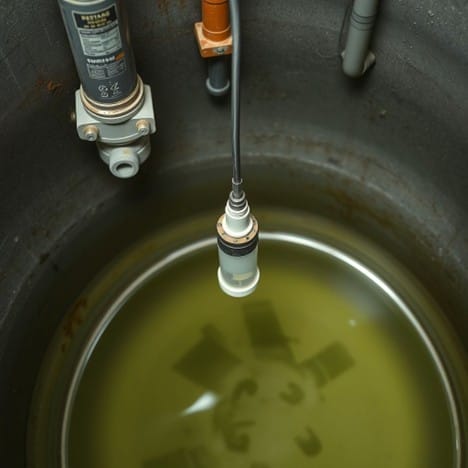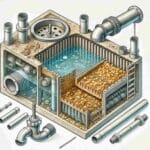The Different Types of Wastewater Float Switches and Their Uses

A sensor trips at the wrong time. An alarm doesn’t sound. The tank overflows. It all starts with the float switch—the one component that quietly controls so much, yet gets so little attention. Until it fails.
In municipal wastewater systems, float switches play a small but powerful role. They detect liquid levels and send critical signals to pumps or alarms. Yet the sheer variety—mechanical, electronic, vertical, tethered—can overwhelm even seasoned facility managers. And when pressure builds to make a fast choice, clarity is everything.
This guide strips away the clutter. You’ll find plain explanations of float switch types, real-world limitations, and when to use each one. It’s all about helping you make confident, informed decisions that reduce risk, not add to it.
What Is a Wastewater Float Switch and Why It Matters
Float switches are level-detection devices. Installed inside tanks or pits, they trigger control responses—turning pumps on or off, sounding alarms, or relaying data upstream.
In practice, float switches:
- Control pump operation based on fluid level
- Trigger alarms when tanks reach critical points
- Send inputs to SCADA (Supervisory Control and Data Acquisition) or remote monitoring panels
A wastewater float switch plays a crucial role in managing fluid dynamics within lift stations and holding tanks. Getting this choice wrong? It’s more than just a misstep—it can lead to overflow, unplanned shutdowns, or worse: regulatory violations.
When compliance is non-negotiable and infrastructure is aging, float switch performance isn’t just important—it’s essential.
Mechanical Float Switches
The workhorses. Mechanical floats are everywhere in wastewater systems. Rugged, simple, proven.
You’ll typically find:
- Tethered floats that pivot when levels change
- Vertical rod floats that slide along a shaft
- Legacy ball-style/mercury floats once valued for their durability before environmental rules changed the game
Why they work:
- Inexpensive and easy to swap
- Familiar to most technicians
- Compatible with many legacy control panels
Where they struggle:
- Moving parts can seize in greasy or sticky tanks
- Turbulent flow throws off accuracy
- Foam or buildup can block movement
Best for:
- Clear-water pits
- Low-maintenance systems
- Installations with consistent flow and minimal solids
A good mechanical float can last years—until the environment changes. Then problems start.
Electronic and Sensor-Based Float Switches
When conditions get harsh—or precision is non-negotiable—electronic sensors step in. These modern alternatives ditch the moving parts and deliver tighter control.
Options include:
- Ultrasonic: Non-contact, uses sound waves to detect distance. Affected by foam, vapor, or condensation on the sensor face.
- Conductivity probes: Depend on a continuous conductive path. Useless in non-conductive fluids.
- Capacitive sensors: Detect dielectric changes. Vulnerable to misreads when sludge or grease coats the surface.
- Optical sensors: Rely on light disruption. Excellent in clean tanks, but grease or solid buildup can block signals fast.
Strengths:
- No parts to stick or wear
- Excellent in confined or irregular tanks
- Pairs well with SCADA and automation setups
Limitations:
- Higher cost up front
- Environmental sensitivity varies by type
- May require more precise installation and grounding
Best for:
- Sludge-heavy systems
- Lift stations with variable flow
- Remote telemetry or high-efficiency operations
Bottom line: these sensors excel where mechanical floats fall short—if conditions are right. Choosing the correct wastewater float switch for these scenarios often makes the difference between seamless automation and daily troubleshooting.
How to Choose the Right Float Switch for Your Facility
It’s not just about buying the newest model. It’s about matching function to environment—accurately, reliably, affordably.
Start with the liquid. Clean water? Mechanical switches are usually fine. Heavily contaminated tanks? Go electronic or choose chemically resistant materials like PVC, polypropylene (PP), PVDF, or 316L stainless steel.
Next, think turbulence. In calm tanks, mechanical floats swing or rise freely. But turbulence causes bounce, twist, false signals. That’s where guided or solid-state floats hold their ground.
Now, space. Vertical constraints? Use a compact rod float or sensor. Plenty of depth? A tethered switch with the right cable length can work well.
Don’t forget electrical specs. Float switches must match your control panel’s voltage and current. Also check logic:
- Normally Open (NO): Current flows only when activated.
- Normally Closed (NC): Current flows until interrupted.
Finally, consider installation realities: exposure to chemicals, temperatures, or confined space access. These matter more than you think.
Let’s look at common matches:
- Tethered floats: Reliable in open pits with calm media. Struggle in grease or narrow wells.
- Vertical floats: Great for tall, narrow tanks—less room to swing.
- Ultrasonic sensors: Perfect for thick sludge or where touch-free sensing is key. Foam, vapor, and angle misalignment can interfere.
- Conductivity sensors: Best in conductive, clean liquids. Not usable in oils.
- Capacitive sensors: Ideal for tight quarters, unless coating buildup skews readings.
- Optical sensors: Quick alerts in clean tanks. Easily fooled by oily films or sludge.
Sometimes, the best setup uses more than one switch. One for control. One for backup. One for alarms. Many facilities use multiple wastewater float switches to create built-in redundancies and avoid failure at critical points.
Preventive selection checklist:
- What’s in the tank—water, sludge, grease, chemicals?
- Calm or chaotic flow?
- Enough space for tether movement or sensor mounting?
- What voltage/current does your panel support?
- Do you need multiple switch points or just one?
Conclusion: Precision Beats Guesswork
A float switch may be simple. But the wrong one? That mistake compounds fast.
False alarms. Overflow. System downtime. Even compliance failures. Choosing correctly isn’t optional—it’s foundational.
Here’s what matters most:
- Know the media
- Match the mounting and motion needs
- Check voltage and logic
- Avoid one-size-fits-all thinking
The right wastewater float switch doesn’t just keep systems running. It protects budgets. Prevents callbacks. Builds trust.
Start by reviewing your current setup. Think through what’s changed—media, flow, compliance needs. Then decide: is your float switch still the right fit?
Frequently Asked Questions (FAQs)
Q: What’s the difference between a tethered float switch and a vertical float switch?
A: Tethered switches swing on a cable and respond to angle—great for big, open tanks. Vertical floats move up and down a guide—ideal when space is tight or the tank shape is narrow.
Q: Can one float switch control both high and low levels in my tank?
A: Usually not. Most systems use separate floats for different levels—start, stop, alarm. Dual-level sensors exist but require the right panel and setup.
Q: How do I know if my float switch is compatible with my control panel?
A: Check the voltage and current specs. Look at whether the switch is Normally Open (NO) or Normally Closed (NC). And confirm the cable type suits your system.
Frequently Unasked Questions (FUQs)
Q: Are all float switches safe for use in chemically treated wastewater?
A: No. Materials like PVC, PP, PVDF, or stainless steel offer better resistance. But even those degrade in the wrong conditions. Check compatibility every time.
Q: Does the turbulence in a tank affect float switch performance?
A: Yes—and more than most expect. Turbulence causes floats to sway unpredictably. Mechanical switches can give false signals. Electronic types with guided mounts work better here.
Q: Is a more expensive float switch always better for wastewater systems?
A: Not necessarily. It’s not about price—it’s about purpose. The best switch is the one matched to your tank, media, and control logic.








Leave a Reply